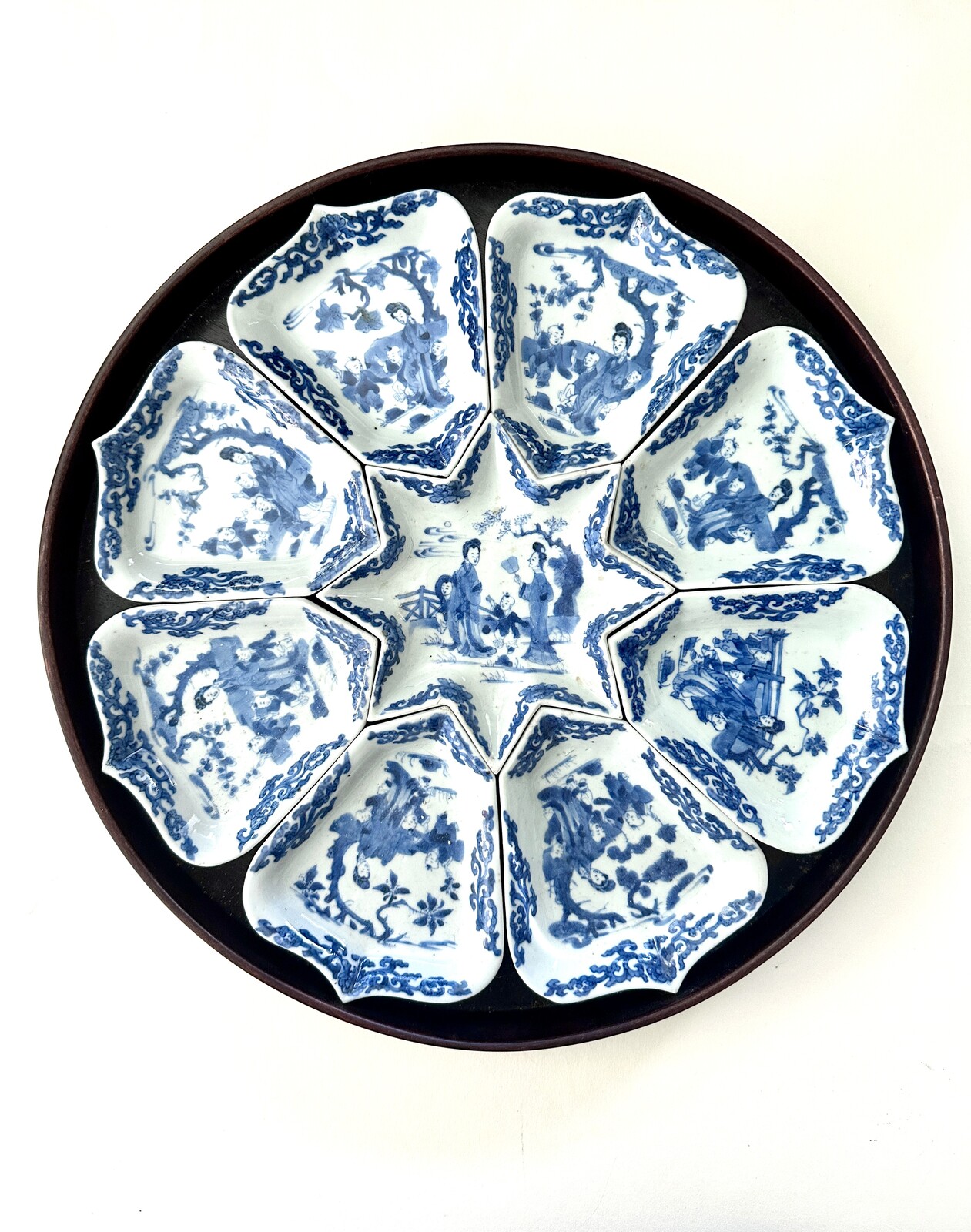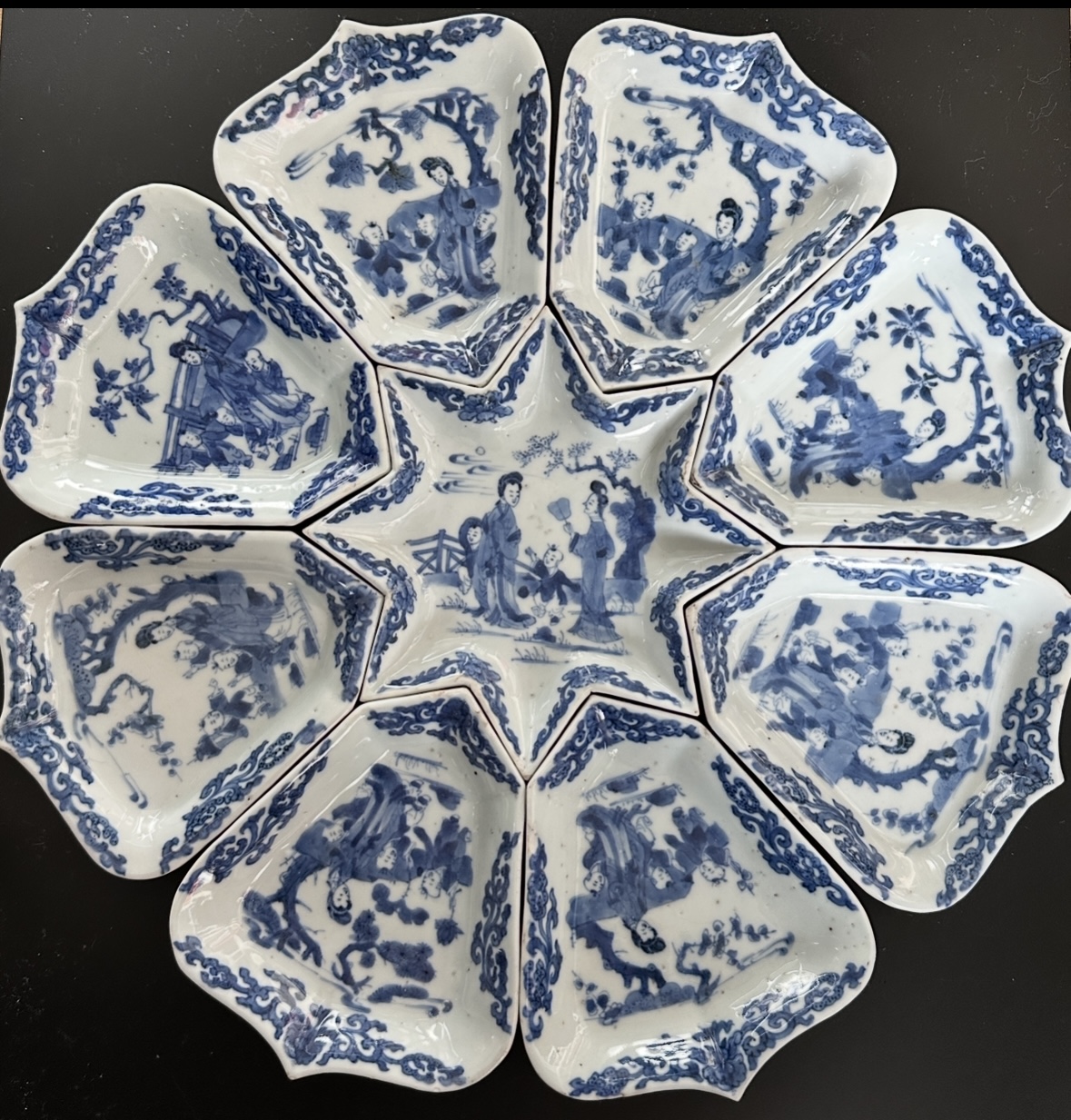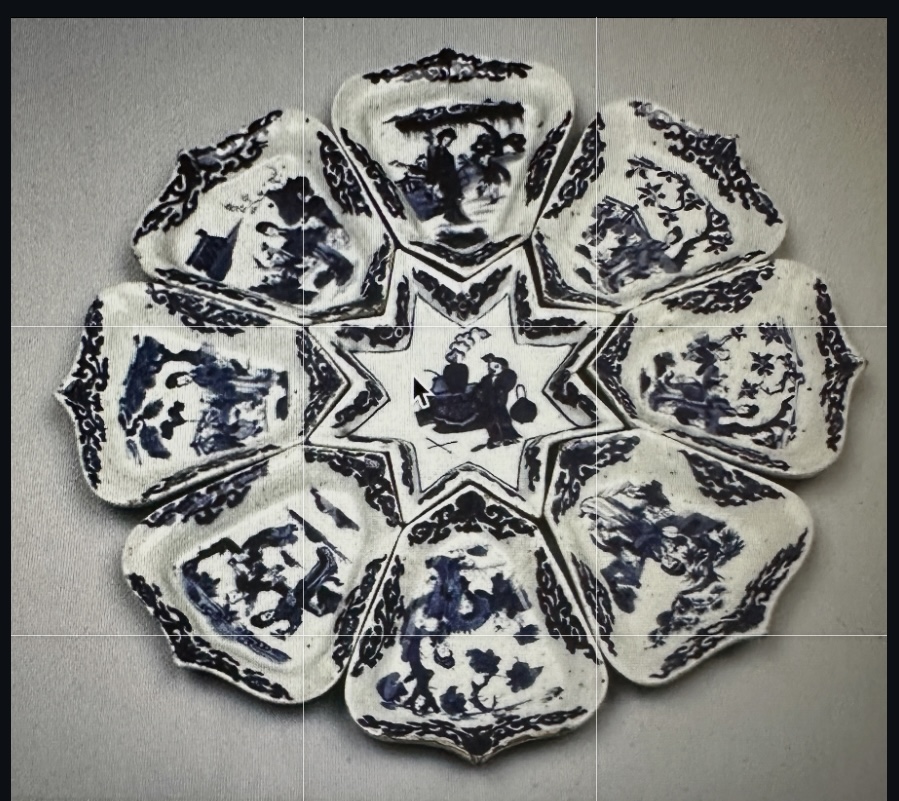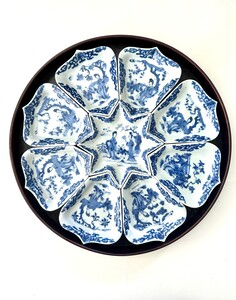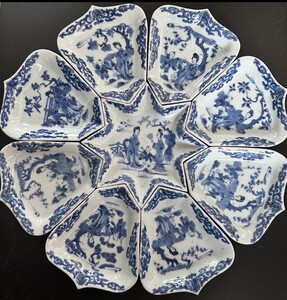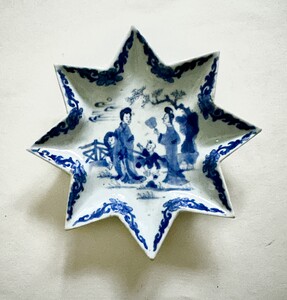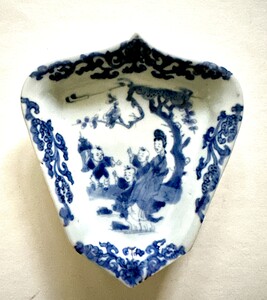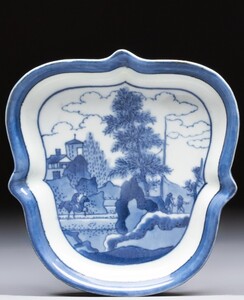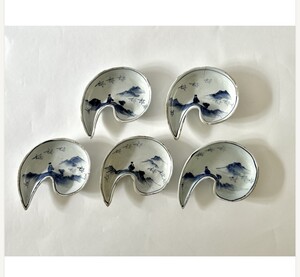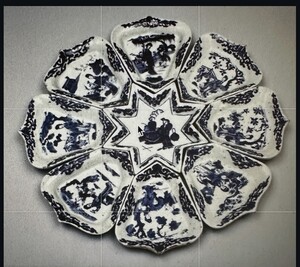Kangxi period, c. 1700
The set consists of a central star-shaped dish surrounded by eight lappet-shaped dishes, together forming a large flowerhead.
Each dish is decorated in underglaze-blue with one or two ladies and boys at play, all under a blossoming tree in a fenced garden. The rims are painted with feathery scrolls.
Diameter 38 cm; in wooden tray
A very similar set is in the Museum Princessehof in Leeuwarden, Accession No.LY0577 (see image 7)
The primary use of Chinese sweetmeat dishes is to serve various ‘sweetmeats’, such as dried fruits, nuts, and other delicacies, during dinners or tea drinking and especially for festive events like Chinese New Year, to host family and friends.
As part of complete sets, they were both functional and decorative, on display on the table an interesting conversation piece.
Often there is a mutual influence of Chinese, Japanese and Western cultures, in the shapes as well as in the decoration (see the Japanese dish on image 5).
In the late 17th-early 18th century similar sets appeared in Delft ware highly inspired by the Chinese examples.
It is interesting to notice that such sets may have been inspired by the small Japanese dishes used in Japan for the tea ceremony and its associated meal, 'kaiseki', and which were exported to Europe around 1670 .
During the late Ming dynasty such dishes were produced in China for the Japanese market, mainly in the Tianqi an Chongzhen periods (1620-1644), often in sets of five.
The fanciful shapes and often eccentric asymmetrical shapes and deliberate 'imperfections' were designed to suit the Japanese taste and would appeal to the teamasters (see our recently sold set on image 6).
